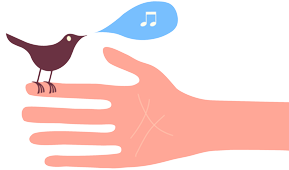 Nobody taught me anything about using smartphones when I was in graduate school in the late ’90s. But I’ve counseled a lot of clients since then and found a lot of ways smartphones can be used to support mental health. Here are my top seven.
Nobody taught me anything about using smartphones when I was in graduate school in the late ’90s. But I’ve counseled a lot of clients since then and found a lot of ways smartphones can be used to support mental health. Here are my top seven.
- Give yourself supportive messages when you need them. If you are anticipating a difficult time — a family visit, a holiday, a medical procedure, etc. — put some supportive messages for yourself into your calendar and turn on the alert so that you are notified at various points during the difficult time. Messages can be simple: “You got this.” “Breathe.” “You are an adult.” “You are safe.” “You are in charge.” Side benefit: when your phone buzzes, it is a good opportunity to excuse yourself if you need a break from the situation. Nobody will know that it’s not a text from someone else.
- Listen to music you like. Make playlists for yourself of music to listen to if you want to cheer up or be energized or relax or be sad.
- Keep in touch with others when it will help. Use your phone to connect with people. If you are feeling isolated or if you are having a hard time socializing, use your phone. Send a text or call. Note: Avoid having arguments via text. Trust me, just don’t do it. Instead, you can text and set up a time to talk with someone.
- Schedule reminders to combat procrastination. If there is something you need to do but you have been procrastinating, schedule a time in your calendar to do it. Let’s say you need to call the electric company to deal with an error in your bill and you are dreading it, so you’ve been putting it off. Pick a time on some day coming up and put in your calendar, “Call electric company” (and put the phone number, if you can). Turn the alert on so you are notified at that time. And — this is the important part — schedule something 5 minutes later with an alert that says, “No, really, make the phone call.” And then a half hour later an alert that says, “If you haven’t made the call yet, do it now.” You get the idea.
- Take photos that make you smile. Make an album on your phone of photos that will remind you of what is important to you.
- Set a timer for worrying. If you find yourself spending lots of time worrying, make a plan to limit your worrying to a certain period of time. For example, you can set aside a half hour a day to worry about whatever you want. When your worries arise outside of that time, you can remind yourself that you have a scheduled time to worry and this is not it. Then, when it is time to worry, set the timer on your phone for 30 minutes (or 10 minutes or whatever amount of time makes sense for you). Proceed to worry for that amount of time. When the timer goes off, decide to be done until the next scheduled worrying time.
- Meditate. Put some guided meditations onto your phone and use them.
There are lots of other possibilities: Podcasts! Apps! Lists! Health tracking! Make your smartphone a tool that works to support you.
A note on numbing: Many people use their smartphones to numb themselves and suppress feelings. Smartphones can be endlessly entertaining with games, movies, email, and social media. Pay attention to how you are using your phone. Are you using it to numb out and shut your feelings down? Are you trying to distract yourself away from other things you need to think about? Are you using your phone to disconnect from people?
I’m not going to tell you that using your smartphone to numb and disconnect is bad. Just make it a choice and not a habit. When you are spending a long time on your smartphone, pause and check in with yourself about what you are doing. Then make a conscious decision about what to do. If you don’t want to be using your phone in the way you are but you don’t want to put it down either, try using it for one of the things mentioned above and see how that is.
